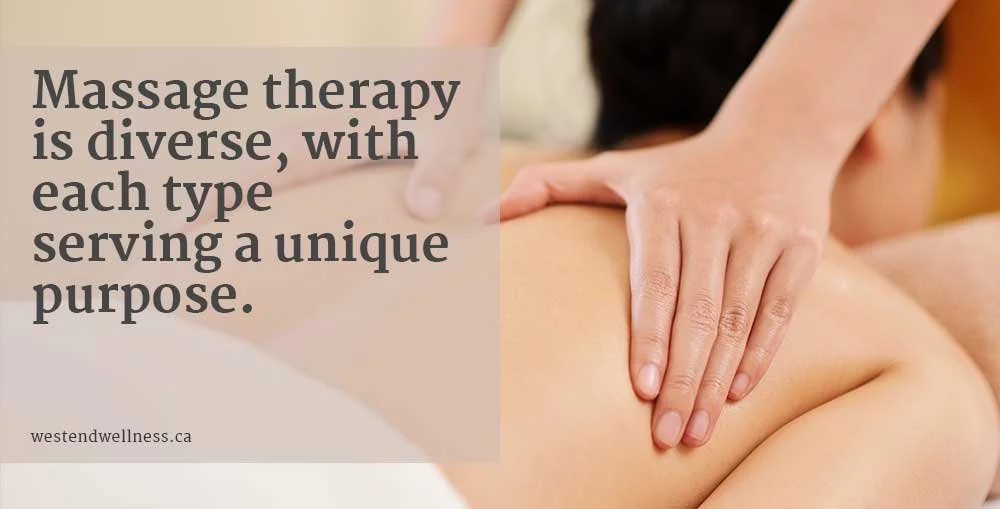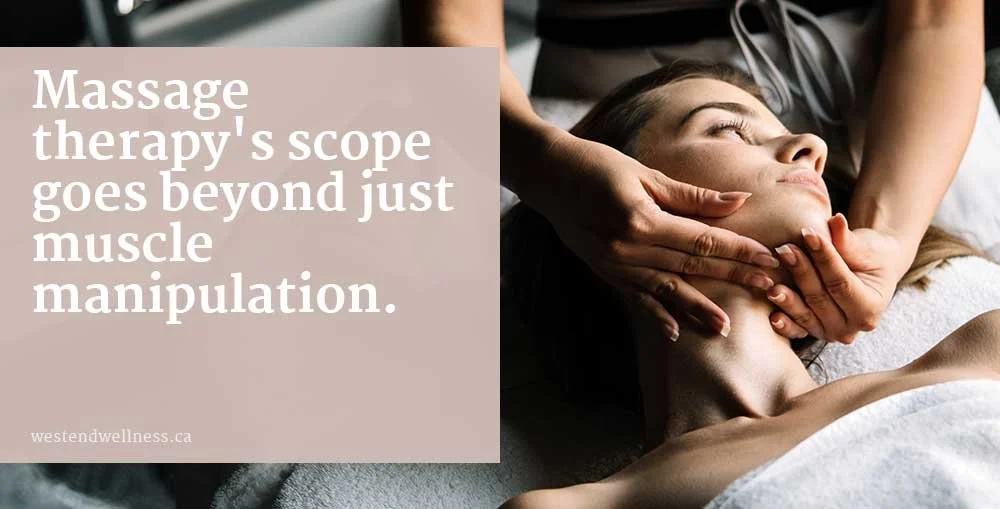Massage Therapy Myths and Facts
Table of Contents Show
Imagine feeling the soothing touch of skilled hands easing your tension, only to wonder, 'Is this really helping, or is it just a luxurious indulgence?' At West End Wellness, we're not just about providing relaxation; we're here to enlighten you.
As seasoned therapists, we've heard it all—from hopeful beliefs to skeptical doubts about massage therapy. In this article, we're setting the record straight.
Join us as we debunk the most common misconceptions and reveal the surprising truths about massage therapy. Get ready to have your views – and possibly your muscles – realigned in the most unexpected ways!
What we want to do is pick out some common misconceptions, and hopefully, separating fact from fiction is crucial. Myths can not only mislead clients but also devalue the true benefits of massage therapy.
By debunking these myths, we can ensure that our clients are well-informed and can fully appreciate and understand the healing potential and scope of massage therapy.
Misconceptions might lead to unrealistic expectations or, conversely, unnecessary skepticism. As professionals, it's our responsibility to provide accurate information, enhance the therapeutic experience for our clients, and foster trust in our practices.
Common Misconceptions in Massage Therapy
All Massages are the Same: A belief that fails to recognize the variety of massage types and their specific benefits.
Massage Therapy is Just About Muscles: Overlooks the broader impact on fascia, lymph flow, and overall well-being.
Effects of Massage are Short-Lived: Underestimates the potential for long-term benefits from regular massage therapy.
Massages Can't Help with Migraines: A misconception that ignores the role of massage in alleviating migraine symptoms.
Massage Only Elevates Endorphins: Simplifies the complex effects of massage on the body, including pain relief and stress management.
Increases Blood Circulation: An ambiguous claim that lacks comprehensive scientific backing.
Boosts Immunity: Overlooks the complexity of the immune system and the need for more research in this area.
Myth 1: All Massages Are The Same
Myth: Many believe all massage therapies are fundamentally the same, differing only in technique.
Fact: This is a misconception. Massage therapy is diverse, with each type serving a unique purpose.
The variety is extensive, from relaxation-focused Swedish massage to deep-tissue therapy targeting chronic pain. For instance, therapists at West End Wellness are trained in various techniques, each designed to address specific health concerns and promote overall well-being.
Myth 2: Massage Therapy Mainly Involves Muscles
Myth: A common belief is that massage therapy is solely about manipulating muscles.
Fact: Massage therapy's scope goes beyond just muscle manipulation. It involves working on fascia - the connective tissue binding muscles, bones, and organs - and can significantly affect lymph flow and joint mobility.
This holistic approach contributes to comprehensive wellness, addressing more than just superficial muscle tension.
Myth 3: The Effects of Massage are Temporary
Myth: It's a common belief that the benefits of massage therapy are short-lived, providing only momentary relief.
Fact: The effects of regular massage therapy can extend far beyond the immediate relaxation felt on the massage table. Continuous massage sessions can lead to lasting improvements in posture, reduced chronic pain, and better stress management.
The cumulative benefits contribute to long-term wellness, challenging the notion that massage therapy is just a temporary fix.
Myth 4: Massages Can't Help with Migraines
Myth: Some people think that massage therapy cannot alleviate migraine headaches.
Fact: Contrary to this belief, massage therapy can be an effective complementary treatment for migraines.
Techniques focusing on trigger points in the neck, shoulders, and head can help release muscle tension and reduce the frequency and intensity of migraine symptoms. By addressing these specific areas, massage therapy can offer significant relief for migraine sufferers.
Myth 5: Massage Only Elevates Endorphins
Myth: A widespread notion is that the primary benefit of massage is the elevation of endorphins, the body's natural painkillers.
Fact: While massage can impact endorphin levels, its benefits are far more comprehensive.
The therapy can aid in reducing stress hormones, improving circulation, and promoting relaxation, contributing to both physical and mental wellness. It's important to understand that massage's therapeutic effects extend beyond endorphin release.
Myth 6: Massage Therapy Increases Blood Circulation
Myth: A common belief is that massage therapy significantly increases blood circulation throughout the body.
Fact: The relationship between massage therapy and blood circulation is complex and not definitively proven.
While some studies suggest that massage may influence circulation, the extent and duration of this effect remain unclear. Therefore, making broad claims about improved circulation due to massage may be oversimplifying a nuanced subject.
Myth 7: Massage Therapy Can Boost Immunity
Myth: Many people believe that regular massage therapy can boost the immune system.
Fact: The impact of massage therapy on the immune system is a topic that requires more research.
While some studies have indicated a possible link between massage and increased levels of certain immune cells, the overall effect on immunity is not conclusively established.
It's important to approach this claim with a nuanced understanding, acknowledging the complexity of the immune system.
Bonus Massage Therapy Myths Busted
Next-Day Soreness: It's a misconception that feeling sore the day after a massage indicates its effectiveness. Soreness varies based on several factors and doesn't necessarily correlate with the quality of the massage.
Drinking Water Post-Massage: While some may downplay the importance, drinking water after a massage is crucial to help flush out toxins and reduce potential soreness.
Prenatal Massage Safety: Contrary to some myths, prenatal massage is safe and beneficial throughout all pregnancy trimesters when performed by a trained professional.
Pain During Massage: The belief that effective massage must be painful is false. While some discomfort might occur, particularly in deep-tissue massages, pain should not be an expected part of the experience.
Discussing Health History: Often overlooked, it's vital to inform your therapist about your health history. This ensures a safe and personalized massage experience.
Final Thoughts
This article explores and clarifies several common myths about massage therapy, revealing the facts behind each.
It's important to remember that misconceptions can obscure the real benefits of massage therapy. While we've addressed several key myths, there may be others you've heard.
If you have any questions or uncertainties, don't hesitate to reach out to the trained therapists at West End Wellness. We're here to help debunk myths, confirm truths, and ensure your massage experience is both enjoyable and informed.
Your journey to wellness is a collaborative one, and we're here to guide you with expertise and care.
If you have any further doubts or questions regarding this subject or another treatment, contact one of our experienced Acupuncturists or Registered Massage Therapists here at West End Wellness Clinic. You can either give us a call or make an appointment.
Disclaimer: Please remember this article is for informational purposes only and should not replace professional medical advice. Please consult a healthcare provider or someone with the correct qualifications before starting any new exercise or treatment program.




